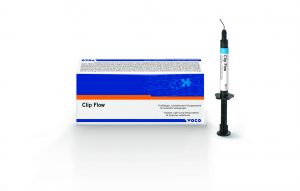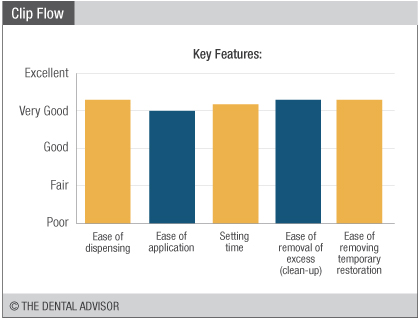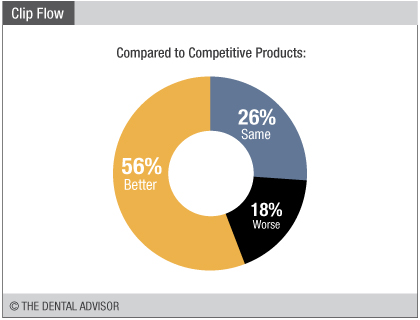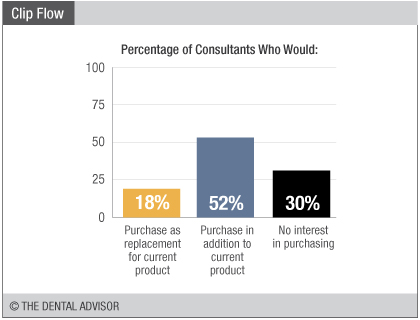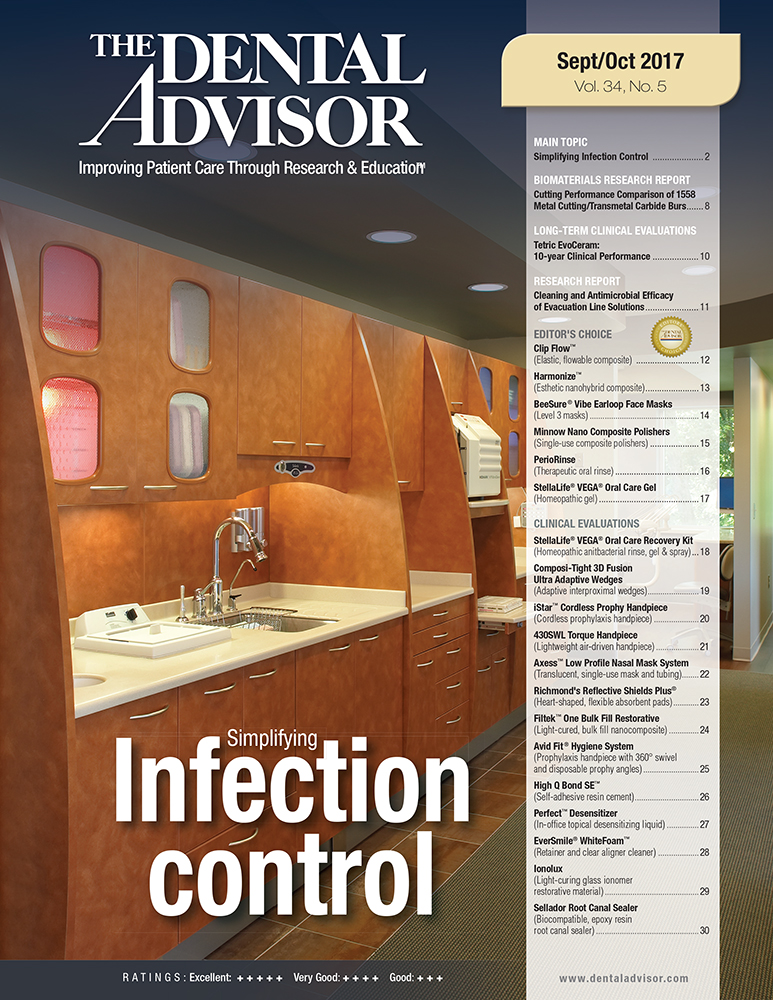Clinical Evaluations
Clip Flow
VOCO
vocoamerica.com
Consultants’ Comments
- “Easy to dispense, flows well and easy to apply.”
- “Great viscosity. Stays where placed. It is also perfect for building the material up.”
- “Easy to use as a block-out material. I used it to fill in black triangles between a patient’s teeth before taking an alginate impression.”
- “Best product for covering screw heads in implant abutments.”
- “The fact that it is injectable with an intraoral tip is a definite plus.”
- “I loved this product. The material is easy to apply and remove, including from implant screw heads when needed.”
- “It was still a little challenging to remove – it came out in pieces.”
Clinical Tips
- Use a little and cure quickly and add to it, if necessary, to eliminate sagging.
- Build up slowly to fill in black triangles prior to taking impressions.
- Great for implant abutment scanning blackout material.
- I used it to cover the gingiva when applying silver diamine fluoride root caries.
Unique Features
- Elastic, allowing for removal in one piece.
- Removal will not affect preparation margins and does not require drilling.
Evaluation Highlights
Clip Flow was evaluated by 27 consultants for a total of 366 times.
- Easy to dispense and place.
- Good flowability and adaptability.
- Elastic when set.
- Versatile.
Description
Clip Flow is a flowable, light-cured temporary resin composite. It is applied using an intraoral tip, adapts well, cures using a halogen or LED curing light, and provides a saliva-proof seal once cured. This material is elastic after setting and non-adhesive, making it possible to remove it in one piece even when undercuts are present. Clip Flow is available in packs of two syringes (1.8 g each) with 20 tips; intraoral tips are available separately in packs containing of 100.
Indications
- Temporary fillings, inlays and onlays
- Sealing of openings for implant screws
- Temporary coronal obturation of root canal orifices
- Relining the intaglio (inner) surface of temporary crowns and bridges
- Block out material for retentive areas in the dental arch, e.g., before taking impressions
- Protective gingival margin coverage
- Securing resin matrices during restoration placement
- Temporary filling of abutment apertures


